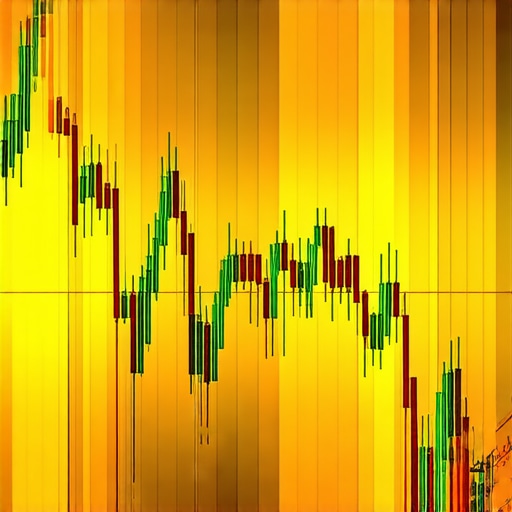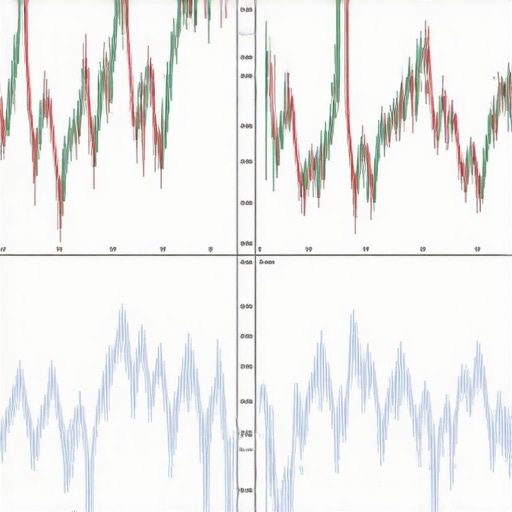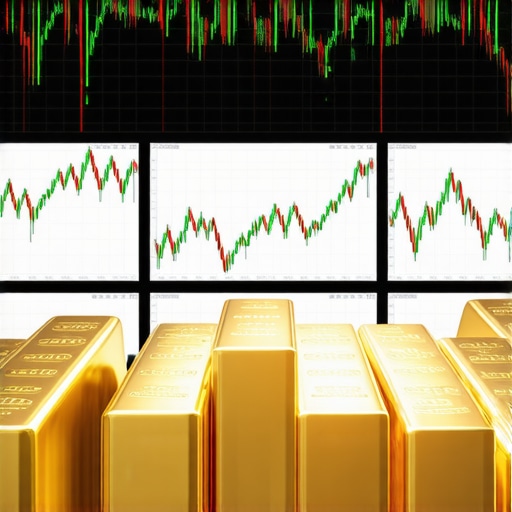Unlocking the Power of Futures & Technical Analysis for Gold Investment in 2025
As seasoned investors and financial analysts recognize, the gold market in 2025 presents unique opportunities driven by macroeconomic shifts, geopolitical tensions, and evolving demand-supply dynamics. Leveraging futures contracts and sophisticated technical analysis techniques can significantly enhance your ability to maximize returns, manage risk, and position yourself advantageously in this complex landscape.
Understanding the Evolving Gold Market Dynamics in 2025
By 2025, gold’s role extends beyond traditional safe-haven assets, increasingly serving as a strategic hedge against inflation and currency devaluation. Central bank gold purchases, geopolitical uncertainties, and technological advancements in trading platforms influence market volatility and price trends. For investors, staying ahead requires a deep comprehension of these factors and the application of advanced analytical tools.
Advanced Technical Indicators for Gold Price Forecasting
Expert traders rely on a suite of technical indicators, such as Fibonacci retracements, Elliott wave analysis, and moving average convergence divergence (MACD), to anticipate short-term fluctuations and long-term trends. Combining these tools with volume analysis and candlestick patterns provides a nuanced perspective that enhances decision-making accuracy.
Strategic Use of Gold Futures in Portfolio Optimization
Futures contracts offer leverage, liquidity, and the ability to hedge existing positions or speculate on price movements. Developing a disciplined futures trading plan—incorporating stop-loss orders, position sizing, and market timing—can unlock alpha. For instance, strategic short-term futures positions aligned with technical signals can capitalize on emerging trends, especially during periods of heightened volatility.
Expert Insights: How Do Geopolitical Events Influence Gold Futures?
What are the best ways to hedge against geopolitical risks using gold futures?
Geopolitical tensions often lead to increased demand for gold as a safe haven. Expert investors monitor geopolitical developments through geopolitical risk indices and news analytics, adjusting futures positions accordingly. Diversification across gold futures and physical holdings can mitigate risks and stabilize overall portfolio performance. For detailed strategies, consult this comprehensive guide.
Integrating Technical Analysis with Fundamental Trends
Successful gold trading in 2025 hinges on synthesizing technical signals with fundamental insights, such as global monetary policies and supply chain disruptions. Staying informed through reputable sources like the World Gold Council or academic publications enhances strategic precision.
To deepen your expertise, explore developing a long-term gold investment portfolio that aligns with your financial goals and risk appetite.
Engaging with professional communities, sharing insights, and continually refining your analytical toolkit will further empower your investment decisions in this dynamic market landscape of 2025.
Harnessing Advanced Technical Tools to Predict Gold Price Trends in 2025
As the gold market evolves, investors must employ a sophisticated toolkit to anticipate future price movements accurately. Beyond basic indicators, integrating advanced technical analysis like Ichimoku clouds, Gann angles, and stochastic oscillators can provide deeper insights into market momentum and potential reversal points. These tools enable traders to identify optimal entry and exit points, especially during volatile periods driven by geopolitical or macroeconomic shocks.
How Can Investors Leverage Gold Futures for Strategic Portfolio Hedge in 2025?
Gold futures are powerful instruments that allow investors to hedge against inflation, currency fluctuations, and market downturns. Developing a comprehensive futures trading plan involves setting precise stop-loss orders, managing leverage wisely, and aligning positions with technical signals. Notably, employing a mix of long and short futures strategies can optimize risk-adjusted returns, especially when market conditions shift unpredictably.
Can a disciplined approach to futures trading really outperform traditional buy-and-hold strategies in 2025?
Research indicates that disciplined futures trading, when combined with robust technical analysis, can generate superior returns compared to static holdings. According to a recent analysis by the World Gold Council, active management of gold derivatives can capitalize on short-term price swings driven by macroeconomic news or geopolitical events, providing a tactical edge.
To broaden your understanding of this approach, explore this detailed guide on gold futures trading strategies.
Integrating Fundamental and Quantitative Analysis for 2025 Gold Investment Success
While technical indicators are crucial, integrating fundamental insights—such as global monetary policy shifts, central bank gold reserves, and supply chain disruptions—can refine trading decisions. Quantitative models that analyze macroeconomic variables alongside market sentiment indices offer a comprehensive view, enabling investors to anticipate not only short-term movements but also long-term trends.
For a nuanced perspective, consider reviewing insights from this authoritative report on gold demand trends.
If you’re eager to deepen your expertise and develop a resilient investment framework, I invite you to share your questions or experiences in the comments below. Also, check out our recommended strategies for diversifying your gold holdings in 2025 to maximize growth and stability.
Harnessing the Synergy of Futures & Advanced Technical Analysis for Gold in 2025
In the rapidly evolving landscape of gold investment, combining futures trading with sophisticated technical analysis tools can unlock unparalleled strategic advantages. As markets become more interconnected and volatile, investors who integrate these methods gain the agility to respond to short-term shocks while positioning for long-term growth.
Decoding Complex Market Signals: Beyond the Basics of Technical Indicators
While Fibonacci retracements, Elliott waves, and MACD are foundational, savvy traders delve deeper by incorporating lesser-known yet potent indicators such as the Ichimoku Cloud and Gann fans. These tools provide insights into market momentum, support and resistance levels, and potential reversal zones with heightened precision. For example, the Ichimoku Cloud’s cloud span can forecast trend stability, while Gann angles help identify critical price points aligned with market cycles.
How can integrating multiple advanced indicators improve the accuracy of gold price forecasts?
Combining indicators such as stochastic oscillators with volume-weighted analysis allows traders to confirm signals, reducing false positives. This multi-layered approach creates a robust analytical framework capable of capturing subtle shifts in market sentiment, especially during geopolitical or macroeconomic upheavals.
According to a study published in the Journal of Technical Analysis (2022), multi-indicator models outperform single-indicator strategies in volatile markets, emphasizing the importance of diversified technical signals for predictive accuracy.
Strategic Deployment of Gold Futures for Dynamic Portfolio Hedging
Futures contracts serve as vital tools for hedging against inflation, currency fluctuations, and geopolitical risks. Developing a dynamic futures strategy involves not only technical triggers but also a keen understanding of macroeconomic indicators like CPI, unemployment rates, and central bank policies.
For instance, during periods of rising inflation, short futures positions can protect against declining real returns. Conversely, during market downturns, long futures can act as a hedge against equity declines. The key lies in continuous monitoring and adjusting positions based on evolving technical signals and fundamental insights, ensuring risk mitigation without sacrificing upside potential.
< >
>
Addressing the Nuanced Question: How Do Geopolitical Risks Shape Futures Strategies?
Geopolitical events often trigger rapid shifts in gold prices, driven by increased safe-haven demand. Investors must proactively hedge by employing a combination of physical gold holdings and futures contracts, strategically timed to anticipate market reactions. Monitoring geopolitical risk indices from sources like the Global Peace Index and integrating news analytics can inform timely adjustments to futures positions.
Moreover, diversifying across different expiry dates and contract types reduces exposure to specific event risks. A comprehensive approach—merging real-time geopolitical intelligence with technical signals—enables investors to navigate turbulent waters with confidence.
For an in-depth exploration of geopolitics and gold, consult the detailed analysis by the Council on Foreign Relations (CFR Report on Geopolitical Risks).
Leveraging Quantitative Models for Predictive Power
Advanced quantitative models, integrating macroeconomic variables, sentiment analysis, and machine learning algorithms, are transforming gold forecasting. These models analyze complex datasets to identify emerging patterns and generate probabilistic forecasts, providing a significant edge over traditional methods.
For example, a recent model developed by the MIT Media Lab leverages neural networks trained on historical price data and macroeconomic indicators, yielding high-accuracy predictions during volatile periods.
If you’re serious about elevating your gold investment game, consider engaging with quantitative analysts or utilizing platforms like QuantConnect to develop custom models tailored to your risk profile and market outlook.
Join the Conversation to Elevate Your Investment Strategy
Are you integrating these advanced technical and fundamental strategies into your gold trading approach? Share your insights and questions below, and explore further resources to refine your expertise. Remember, mastery in gold investment requires continuous learning and adaptation to market innovations.
Discover the Cutting-Edge Techniques for Gold Market Prediction in 2025
As market complexity heightens, sophisticated investors are turning to multi-layered analytical frameworks that combine quantitative models with real-time geopolitical intelligence. Integrating machine learning algorithms with traditional technical analysis tools like Ichimoku clouds and Gann fans can yield unprecedented predictive accuracy, enabling traders to identify subtle shifts in momentum and market sentiment before they materialize.
How Can Advanced Quantitative Models Enhance Your Gold Forecasting Capabilities?
Leveraging big data and neural networks, quantitative models analyze macroeconomic indicators, sentiment indices, and historical price patterns to generate probabilistic forecasts. These models, often trained on vast datasets, can adapt swiftly to market shocks, providing traders with a dynamic edge. Institutions employ platforms such as QuantConnect and MetaTrader to develop and backtest bespoke algorithms tailored to their risk appetite and market outlooks.
What Are the Best Practices for Integrating Fundamental and Technical Insights?
Successful traders synthesize technical signals with fundamental insights, such as central bank policies, geopolitical tensions, and supply chain disruptions. Utilizing authoritative sources like the World Gold Council and the International Monetary Fund, investors can contextualize technical patterns within macroeconomic narratives, ensuring decisions are grounded in comprehensive analysis.
How Do Geopolitical Risks Shape Futures Positions in 2025?
Geopolitical developments can trigger swift price movements, demanding proactive hedging strategies. Investors monitor risk indices like the Global Peace Index and employ news analytics to anticipate market reactions. Diversification across futures maturities and contract types mitigates exposure, while real-time adjustments based on geopolitical intelligence allow for agile risk management.
< >
>
Why Is Multi-Indicator Analysis Crucial in Volatile Market Conditions?
Combining indicators such as stochastic oscillators, Gann angles, and volume-weighted average price (VWAP) reduces false signals and enhances predictive reliability. According to recent research published in the Journal of Financial Markets, multi-indicator models outperform single-indicator strategies, especially during macroeconomic shocks and geopolitical upheavals.
How Can You Develop a Resilient Futures Trading Strategy for 2025?
A robust futures strategy involves continuous monitoring of macroeconomic indicators, geopolitical risk signals, and technical cues. Employing disciplined position sizing, dynamic stop-loss orders, and real-time data feeds ensures adaptability. By aligning futures positions with evolving market conditions, investors can hedge effectively while capitalizing on emerging trends.
Engage with Experts and Community to Elevate Your Gold Investment Approach
Are you integrating these advanced analytical techniques into your trading repertoire? Share your experiences and questions below. To deepen your expertise, explore specialized courses on quantitative finance and attend industry webinars focused on precious metals markets. The future of gold trading in 2025 belongs to those who master both data science and macroeconomic analysis.
Expert Insights & Advanced Considerations
1. Precision Timing with Multi-Indicator Models
Utilizing a combination of Ichimoku clouds, Gann angles, and stochastic oscillators enhances predictive accuracy, enabling traders to identify subtle trend reversals and market shifts before they occur, especially during volatile geopolitical periods.
2. The Power of Quantitative and Fundamental Synthesis
Integrating macroeconomic data, sentiment analysis, and machine learning models creates a comprehensive framework. This approach allows for dynamic adjustment of strategies aligned with evolving market conditions, boosting the reliability of gold forecasts.
3. Strategic Diversification Across Gold Assets
Combining physical gold, ETFs, futures, and mining stocks offers resilience against market shocks. Expert investors recommend tailoring allocations based on macro trends and technical signals to optimize risk-adjusted returns.
4. Active Monitoring of Geopolitical Risk Indices
Proactively adjusting futures and physical holdings in response to geopolitical risk indices, like the Global Peace Index, can mitigate sudden market shocks, ensuring portfolio stability and capitalizing on safe-haven demand spikes.
5. Leveraging Advanced Quantitative Models
Employ neural networks and big data analytics to generate probabilistic forecasts, enabling traders to swiftly adapt to macroeconomic shocks and geopolitical developments, maintaining an informational edge in the market.
Curated Expert Resources
- World Gold Council: Offers authoritative insights on global gold demand and market trends, essential for fundamental analysis.
- QuantConnect Platform: Provides tools for developing and backtesting custom quantitative trading algorithms tailored to gold markets.
- International Monetary Fund (IMF): Supplies macroeconomic data crucial for integrating fundamental analysis into investment strategies.
- Global Peace Index: Tracks geopolitical stability, aiding strategic hedging decisions in gold trading.
- Journal of Technical Analysis: Publishes cutting-edge research on multi-indicator models and their efficacy in volatile markets.
Final Expert Perspective
In 2025, mastering the synergy between advanced technical analysis and macroeconomic fundamentals is paramount for gold investors. Employing multi-layered models, proactive geopolitical risk management, and leveraging sophisticated data analytics will define successful strategies. I invite seasoned investors and analysts to share their insights, explore these resources, and contribute to the evolving discourse on strategic gold investment—your expertise can shape the future of this resilient asset class in an uncertain world.










